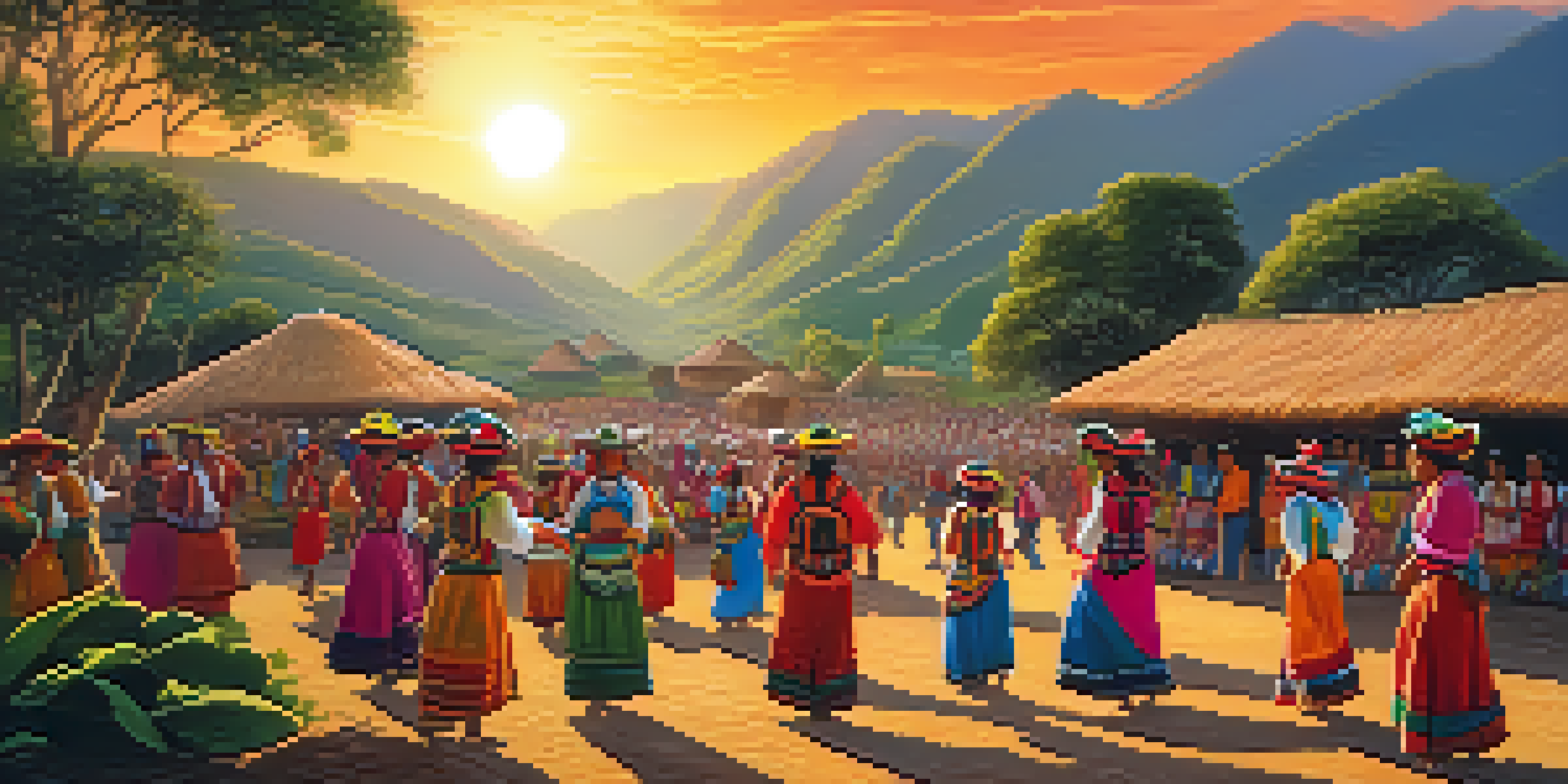Impact of Colonization on Indigenous Languages in Peru

Understanding Indigenous Languages in Peru Before Colonization
Before colonization, Peru was home to a rich tapestry of indigenous languages, with Quechua and Aymara being the most prominent. These languages were not just means of communication; they carried unique worldviews, traditions, and histories. For many indigenous people, language was intertwined with their identity and daily life, serving as a vessel for cultural practices and beliefs. The diversity of languages showcased the complexity of Peru's social fabric, reflecting various customs and ways of understanding the universe.
The Arrival of Colonizers and Language Suppression
With the arrival of Spanish colonizers in the 16th century, indigenous languages faced significant suppression. Colonizers imposed Spanish as the dominant language, often viewing indigenous languages as inferior or primitive. This led to a systematic effort to erase these languages from daily use, including the banning of Quechua and Aymara in schools and public life. The resulting cultural shift created a rift between indigenous communities and their linguistic heritage, impacting generations.
Colonization Suppressed Indigenous Tongues
The arrival of Spanish colonizers in the 16th century led to the systematic suppression of indigenous languages like Quechua and Aymara.
Cultural Erosion and Language Loss
As Spanish became more entrenched, many indigenous languages began to erode, leading to a decline in fluent speakers. The loss of language often resulted in the erosion of cultural practices and traditional knowledge. For instance, many indigenous stories, songs, and rituals that were transmitted through language became less accessible or were lost entirely. This cultural erosion had profound implications, as it not only affected communication but also dismantled the ways of life that had been sustained for centuries.
Resistance and Revitalization Efforts
Despite the challenges, many indigenous communities have resisted the marginalization of their languages. In recent years, there has been a resurgence of interest in revitalizing these languages, driven by community-led initiatives and support from organizations. Programs teaching Quechua and Aymara in schools aim to empower younger generations, fostering pride in their linguistic and cultural heritage. This revitalization is crucial for preserving identity and ensuring that traditional knowledge is passed down.
Revitalization Efforts are Crucial
Indigenous communities in Peru are actively working to revive their languages through education and community initiatives.
The Role of Education in Language Preservation
Education plays a pivotal role in preserving indigenous languages, as it provides a structured way to pass on knowledge. Bilingual education programs that incorporate indigenous languages alongside Spanish have shown promising results in many regions of Peru. By creating an environment where both languages are valued, these programs help strengthen community ties and foster a sense of belonging. Furthermore, they encourage students to embrace their linguistic heritage, which can be empowering and affirming.
The Impact of Globalization on Indigenous Languages
In today's interconnected world, globalization poses both challenges and opportunities for indigenous languages. On one hand, the dominance of global languages like English and Spanish can overshadow local languages, leading to further decline. On the other hand, technology and social media provide platforms for indigenous communities to share their languages and cultures with a wider audience. This duality highlights the need for a balanced approach to language preservation that embraces both tradition and modernity.
Globalization Affects Language Survival
While globalization poses challenges to indigenous languages, it also creates opportunities for sharing and preserving cultural heritage through technology.
Government Policies and Their Effect on Indigenous Languages
Government policies have historically played a significant role in either supporting or undermining indigenous languages. While some policies have begun to promote bilingual education and the recognition of indigenous rights, challenges remain in their implementation. Ensuring that these policies are effectively enforced is crucial for the revitalization of indigenous languages. Furthermore, active participation from indigenous communities in policy-making can lead to more culturally sensitive and effective strategies.
Conclusion: The Path Forward for Indigenous Languages
The journey of indigenous languages in Peru is one of resilience and hope amidst adversity. While colonization has left lasting scars, the efforts to revitalize these languages show the strength of indigenous identities. Moving forward, it is essential to foster collaboration between communities, educators, and policymakers to create a supportive environment for language preservation. By valuing and promoting these languages, we can help ensure that the rich cultural heritage of Peru continues to thrive for future generations.